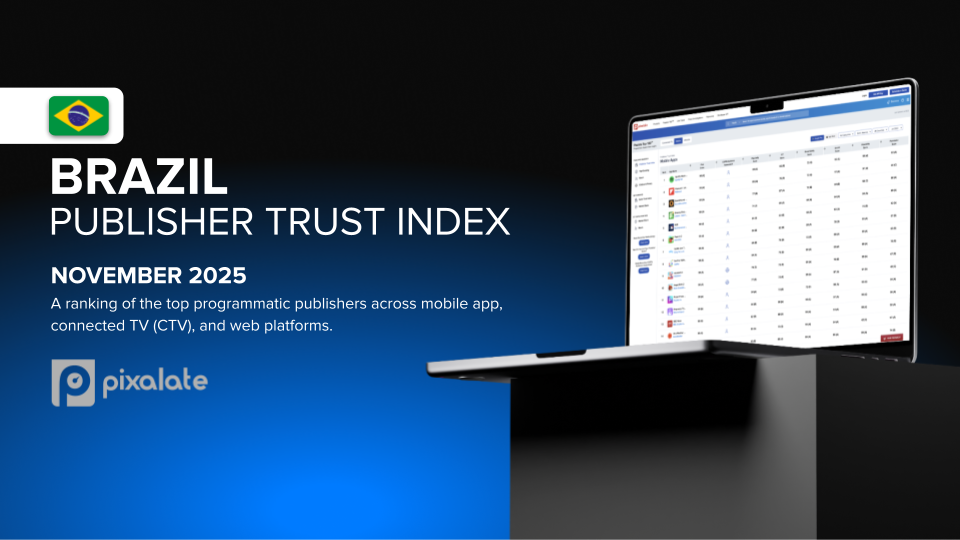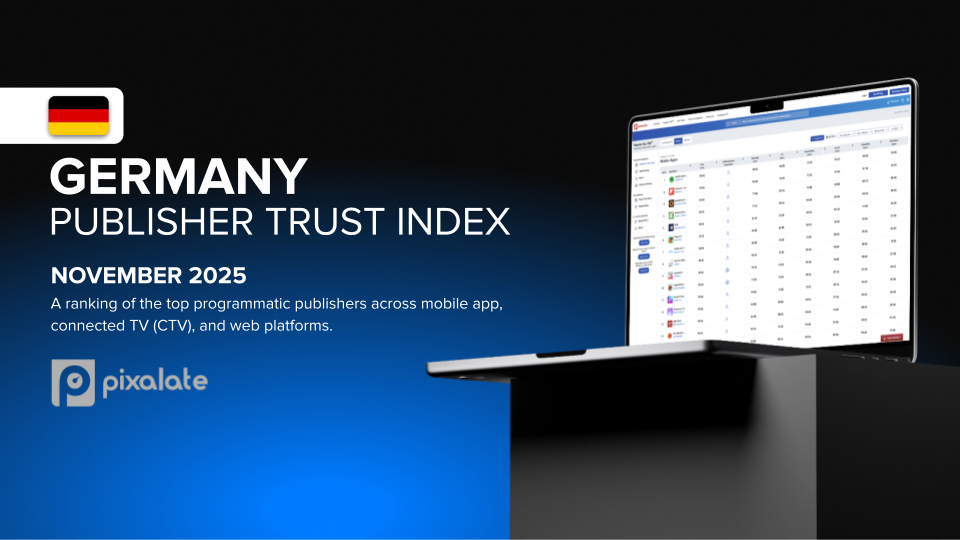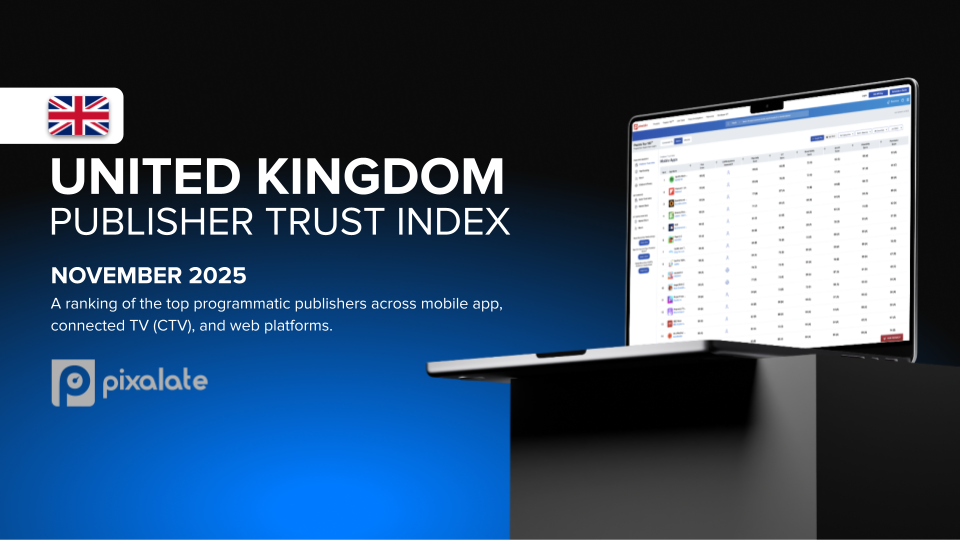Earlier this year, Pixalate formed a Trust and Safety Advisory Board to quality check our automated COPPA Compliance methodology using a manual review process to assess whether apps are child-directed based on the factors outlined in the COPPA Rule.
In a new blog series, Pixalate is making public the results of our teachers’ manual review process for assessing child-directedness for the most popular apps. This type of public assessment has never been done before - and we hope it brings transparency for app developers, the digital ad ecosystem, policymakers, and privacy advocates.
This post serves as an FAQ about the Trust and Safety Advisory Board, its manual review process, and the blog series.
About the author: Allison Lefrak is Pixalate’s SVP of Public Policy, Ads Privacy, and COPPA Compliance. She previously worked at the Federal Trade Commission (FTC). She was a Senior Attorney and the Identity Theft Program Manager in the Division of Privacy and Identity Protection which is the division charged with enforcing COPPA. She worked on a number of COPPA enforcement actions including the settlement with Musical.ly (now known as TikTok).
Table of Contents
- Pixalate's Trust and Safety Advisory Board
- FAQs about Pixalate's Manual Review Process
- FAQs about Pixalate's Manual Review Blog Series
Pixalate's Trust and Safety Advisory Board
Mission statement
Provide transparency into Pixalate’s manual review methodology and further educate the ad tech community and app developers to enhance their COPPA compliance practices.
Why we need it: Google and Apple's failures
Google and Apple fail to provide a turn-key solution for determining if an app, in their respective app stores, is child-directed. Their content ratings do not directly correlate with whether an app is targeting children under 13, and they continue to fall short of scalable solutions for identifying child-directed apps according to the COPPA Rule.
FAQs about Pixalate's manual reviews and the Trust and Safety Advisory Board
What is Manual Review and why is it important to COPPA Compliance?
Manual review means that a human being reviews an app to assess whether or not it is targeting children under 13. This is important to COPPA compliance because the factors under the Rule are subjective.
What does Directed to Children, Mixed Audience, and General Audience mean?
There are two categories of online services under COPPA: directed to children and general audience. Mixed audience apps are a subset of the child-directed category, not a category unto itself.
- Directed to children is defined in the COPPA Rule as an online service, or portion thereof, that is targeted to children.
- A mixed audience online service targets children under 13 as a portion of its audience. Apps that are widely-known to have a large proportion of children are using the service will likely be considered a mixed audience site
- General audience apps do not target children under 13 as a portion of the audience. A general audience app does not become a mixed audience service simply because some children use it.
What are COPPA’s Factors for Child Directedness?
Classifying a service as child-directed requires consideration of the ten factors set forth in the COPPA Rule. The list below contains the factors and an explanation of each one.
- Subject Matter: Is the subject matter of the app something that children under 13 would be interested in. For example, is the app about cute little animals, unicorns, or well known characters like Peppa Pig?
- Visual Content: Does the app contain images that children under 13 would be attracted to? For example, does the app contain animated images of cute dancing animals?
- Use of Animated Characters or Child-Oriented Activities and Incentives: Does the app use animated characters that children under 13 would be attracted to? Does the app involve an activity that children would enjoy like making slime or making a character repeat things in a funny voice? Does the app offer prizes or incentives that children would be motivated to obtain like virtual stickers?
- Music or other Audio Content: Does the app have music or audio content that children under 13 would enjoy such as silly voices or songs from Disney movies?
- Age of Models: If the app has models featured in it, are they children under 13?
- Presence of Child Celebrities or Celebrities who Appeal to Children: Does the app feature celebrities that children under 13 would be familiar with such as actors from Nickelodeon television shows?
- Language or Other Characteristics of the online service: Is the language in the app easily understandable to children under 13?
- Advertising promoting or appearing on the online service that is Directed to Children: Does the app contain ads for things that children under 13 would be interested in such as toys or other child-directed apps and games?
- Competent and Reliable Empirical Evidence Regarding Audience Composition: Is there any evidence of the age of the users of the app? For example, are there reviews of the app that are written by people who identify as being children under 13 or by parents who say their children under 13 enjoy the app?
- Evidence Regarding the Intended Audience of the online service: Is there evidence that the developer intends for children under 13 to use the app? For example, does the app store description say, “Toddlers will love to learn to spell using this app!”
Blog Series: Transparent manual reviews for app child-directedness from Pixalate's Trust and Safety Advisory Board
How is this blog series different from what Common Sense Media does?
Pixalate provides compliance solutions for children’s online privacy by assessing mobile apps for child directedness under COPPA. This enables ad tech companies, app developers, and others to identify apps targeting children under 13, the first step in mitigating COPPA compliance. Common Sense Media reviews media that appeals to kids, and evaluates it based on age appropriateness. Their goal is to inform parents so they better understand what kids can handle at every age. Common Sense Media does not provide solutions for complying with online privacy laws.
Manual review insights: The 10 factors from the COPPA Rule
In each blog post, one of our Pixalate Trust & Safety Advisory Board teachers will highlight their assessment of the most popular apps that they manually analyzed for child-directedness based on the factors in the COPPA Rule.
The teacher will indicate the factors they relied upon in their assessment using the 10 factors shown below that reflect the ten child-directed factors in the COPPA Rule. You can read more about these factors above.
- Visual Content

- Subject Matter

- Incentives

- Music and Sounds

- Celebrities

- Age of Models

- Advertising

- Language

- Audience Composition

- Target Audience

Note: Not every factor comes into play when analyzing an app for child directedness. For example, a coloring app may not have any celebrities or music. Therefore, when our educators evaluate the app, those factors will not be featured as an influential part of their analysis.
Prioritization for Manual Reviews
- Pixalate prioritizes reviews for the most popular mobile apps, indicated by the number of downloads in Google Play Store or the number of user reviews in the Apple App Store.
- Pixalate’s review of CTV apps is coming soon, and will also be prioritized by the number of app reviews and volume of advertising observed by Pixalate.
While an app may not be featured in this blog series, you can view Pixalate’s assessment of any app in the Google Play or Apple App store by visiting the Pixalate Media Ratings Terminal.
Who is on the Trust & Safety Advisory Board?
Pixalate’s Trust & Safety Advisory Board is composed of teachers who have first hand experience working with children under 13. The child-directed factors in the COPPA Rule entail knowing what children under 13 would be attracted to when it comes to online services including mobile apps. Teachers are particularly well-suited to apply these subjective factors given their experience with children and technology in the classroom.
Disclaimer
This blog post published by Pixalate is available for informational purposes only and is not considered legal advice. By viewing this blog post, the reader understands and agrees that there is no attorney-client relationship between the reader and the blog publisher. The blog should not be used as a substitute for legal advice from a licensed professional attorney in the applicable jurisdiction(s), and readers are urged to consult their own legal counsel on any specific legal questions concerning any specific situation. The content of this blog post reflects Pixalate's opinions with respect to factors that Pixalate believes may be useful to the digital media industry. Pixalate's opinions are just that, opinions, which means that they are neither facts nor guarantees; and this blog post is not intended to impugn the standing or reputation of any entity, person or app, but instead, to report findings pertaining to mobile and Connected TV (CTV) apps.







